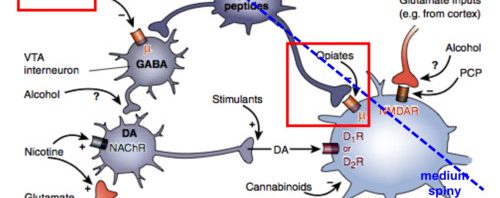In the state of North Dakota, the number of drug cases submitted to the State Crime Laboratory have increased by 26% from 2013 to 2015. In 2015, alcohol, marijuana, meth, opioids and heroin were the top five substances reported by adults in North Dakota Alcohol and Other Drugs treatment. These statistics from the North Dakota Office of Attorney General depict the increasing rate of individuals criminally caught abusing drugs in this area, and the substances that those individuals are primarily using.
Addiction to substances like these are more common than people may realize. According to the Addiction Center, over 20 million Americans over the age of 12 have an addiction, and that number is excluding tobacco. Reported from the same source, 100 people die every day from drug overdoses, and this rate has tripled over the past 20 years.
All in all, addiction is not well-defined. Most people don’t know that many components of addiction conclude that addiction is a brain disease. Addiction is characterized by habitual use of a substance, despite adverse effects and efforts to stop. This characteristic of addiction is explained by dependence. There are two types of dependence in addiction: physical and psychological.
Physical dependence shows signs of tolerance and withdrawal. Tolerance is the reduced effect of a drug over time. Withdrawal is an experience of drug-opposite symptoms when coming off the drug. These symptoms are categorized as physical dependence, because they illustrate how the body cannot function without the drug, due to neuronal changes.
On the other hand, psychological dependence describes the emotional and cognitive aspects of addiction, including craving and lack of behavioral inhibition. Cravings show the perceived need to use, and it results in compulsive drug behaviors. Lack of behavioral inhibition illustrates a disregard of the consequences of drug-taking. Individuals struggling with addiction experience these two facets of dependence.
The construct of dependence can be explained by investigating brain reward circuitry as a result of drug abuse. A 2011 review article by Philibin, Hernandez, Self, and Bibb explain that addiction is generally characterized by increases of dopamine in the neural projection from the ventral tegmental area (VTA) to the nucleus accumbens (NAc). More specifically, increased levels of dopamine lead to overactivation of two important second messengers: cAMP and calcium. Both cAMP and calcium contribute to gene transcription, resulting in synaptic remodeling of cognition and motivated behaviors. Studying biological mechanisms helps identify the function of drug addiction.
The behavioral principles of conditioning also provide insight to the discussion of addiction development. Operant conditioning clarifies how drug use turns into addiction and drug abuse due to the reinforcing consequences of drug-taking behaviors.
Positive reinforcement explains how a behavior will become more likely when followed by the presentation of a pleasurable stimulus. The act of taking a drug is positive reinforced in the short-term by the pleasurable effects produced by the drug. Pleasurable effects result in an increased likelihood of taking that drug again.
Negative reinforcement explains how a behavior will become more likely when followed by the removal of an aversive stimulus. The act of taking a drug is negatively reinforced in the long-term by the removal of unpleasant withdrawal symptoms. Because taking the drug removes the adverse withdrawal symptoms of the drug, it increases the likelihood of drug-use.
All in all, addiction is difficult to clarify and explain. We do know that it is more prevalent than we realize, especially considering that addictive tendencies can show up in perceivably more harmless ways than drug abuse, like regular coffee drinking, compulsive shopping, overeating, and more. The reality is that addiction is not developed or maintained by one mechanism or one system–it is physical and psychological, biochemical and behavioral.
Addiction: A Multi-Faceted Disease
